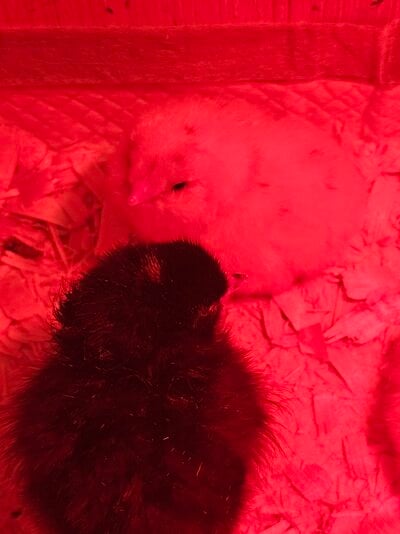Hello, I need some help please,
So we just hatched out a bunch of eggs from our flock of mixed breeds. We have 3 different breeds of roosters: smokey pearl, brown leghorn, and a buff brahma/blue laced wynodotte mix. Our hens consist of mostly white and brown leghorns, easter eggers/ Americana, buff brahma, cochin, and one wynodotte and buff orphington. We had incubated white, brown, pink, cream, and green eggs. I'm just super surprised because the majority of the chicks have come out white with black spots. I was expecting that from the white eggs but alot of the brown and green eggs also have white chicks with black spots. Do smokey pearl rooster have dominant genes? I just can't believe that they look so much like just smokey pearl chicks. The only difference is that some have beards and some have feather feet. I'm assuming he mated with our Easter Eggers and brahmas.
So we just hatched out a bunch of eggs from our flock of mixed breeds. We have 3 different breeds of roosters: smokey pearl, brown leghorn, and a buff brahma/blue laced wynodotte mix. Our hens consist of mostly white and brown leghorns, easter eggers/ Americana, buff brahma, cochin, and one wynodotte and buff orphington. We had incubated white, brown, pink, cream, and green eggs. I'm just super surprised because the majority of the chicks have come out white with black spots. I was expecting that from the white eggs but alot of the brown and green eggs also have white chicks with black spots. Do smokey pearl rooster have dominant genes? I just can't believe that they look so much like just smokey pearl chicks. The only difference is that some have beards and some have feather feet. I'm assuming he mated with our Easter Eggers and brahmas.









